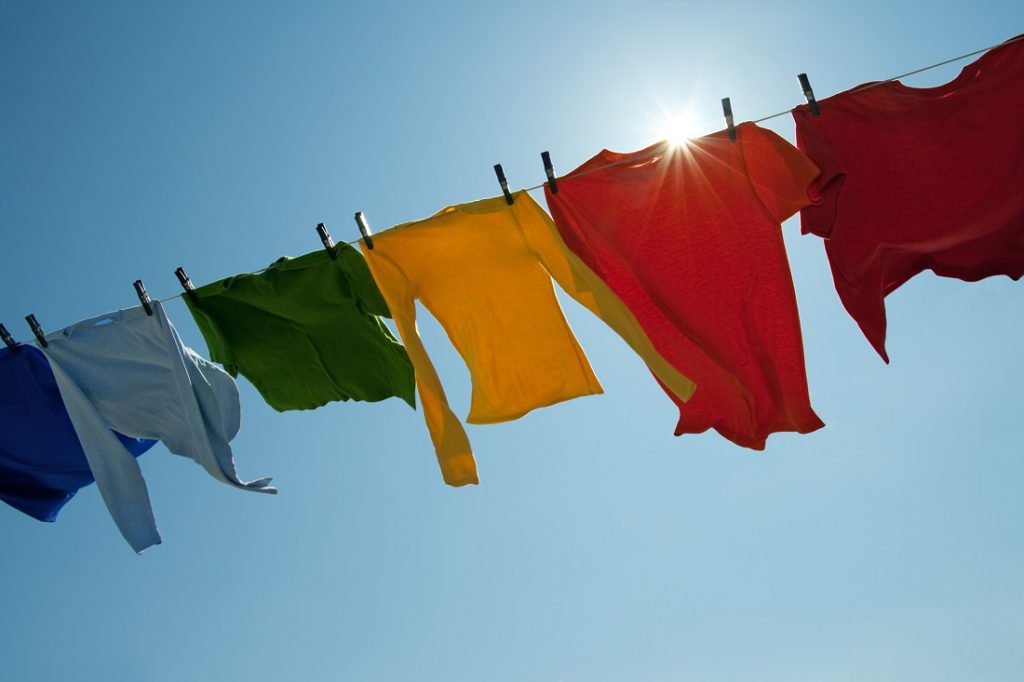
Is color your first line of defense against UV rays?
Could colorful wardrobe choices be your first line of defense against UV rays? Have you been paying attention to the color side of sun protection?
Are you comfortable that you are aware of the basics of color science and can use the information to protect against sunburn on your fun days in the sun?
Or have you continued to use the warm sunny days to work on that tan that you love so much?
The warm, sunny days usually push that button on all of us to get outside; It is time to enjoy the great outdoors.
However, while soaking up the sun does have its perks, it’s essential to remember that the sun’s ultraviolet (UV) rays can be harmful to our skin, even while using sunscreen. Add some color information to the mix of sun protection for your skin.
Fortunately, one often-overlooked aspect of sun protection lies right in our closets. I am referring to our wardrobe choices.
Let’s check out how the power of color already in your closet can be your first line of defense. Even against UV rays, you can make informed choices for better skin safety.
Understanding UV radiation before diving into how to use color in sun protection will make you aware of the necessity to protect your skin from too much sun.
UV radiation can be a relentless destroyer of our skin as well as rushing us into early aging just from overexposure.
UVA or UVB ? Does It Matter?
There are two main types of Ultra Violet Rays, UVA and UVB. There are also UVC rays, but they are absorbed by the atmosphere and don’t get a chance to damage your skin. At last not yet.
Yes, there are rays that can lead to sunburn, premature aging, and even skin cancer if we don’t take proper precautions. These dangerous rays are not to be taken lightly or dismissed. There are where the real trouble will start with skin cancer.
Let’s start with these easy distinctions of the rays. UVA is responsible for aging. That part is the sun’s rays are present, anytime there is daylight.
UVB is the group of UV rays responsible for sunburn.
If you are outside without sunscreen, or some sort of clothing covering the skin, you are exposing yourself to UVA. Even if you don’t feel the heat, those UVA rays are busy.
Fortunately, most of us react defensively to the heat when we feel it. However, we ignore the UVA which is less intense even though it goes deeper than the UVB.
UVB is easier to be aware of, due to the heat. It is the one we that tans, then burns our skin.
Even in safer times of sun exposure, before 10 AM and after 4 PM, those UVA rays are out there working on your skin. So if you are not using sunscreen, you are getting exposed to early aging. This makes sunscreen on your face a necessity, winter or summer.
Don’t forget the light rays coming through the window. It will do the nasty job of early aging, as well. It may be a bit slower, but it will happen.
Can we protect ourselves all the time? Maybe not, but if we can become aware and protect our facial skin most of the time getting older is easier on your skin.

The Role Of Clothing in Protecting Our Skin From the Sun
Clothing acts as a physical barrier between your skin and UV rays, reducing your exposure significantly.
Through the years, your face has been exposed to the sun. You had clothing that blocked some of the sun from your body. But your hands and face didn’t. It is hard to protect your face all the time, every day.
That aging on your face that was faster than on other parts of your body was the tip-off for science to the need for everyday sunscreen, not just for all day outside.
The days you were inside were adding up in damage as well. Sunscreen will soak into your skin and become ineffective. Yes, even when you are not swimming or sweating.
Aging was being noticed in the cooler climates where people spent much more time indoors than we do here in our sunny central Texas climate.
Recognizing A Need For Change
The Ultraviolet Protection Factor (UPF) is a measure of a fabric’s ability to block UV radiation. Keep in mind that not all clothing provides the same level of protection.
Knowing what fabrics are sun blocking will allow you to make better choices when you go to our closet for a shirt to wear when you are outside.
This leads us to the question, what is a sun blocking shirt? Do you know what to look for in your closet? Find a long-sleeved, loose-fitting shirt with a collar from a tightly woven fabric. The tight weave will keep out the sun.
If your shirt of choice is a favorite tee shirt, color can help in keeping out the sun.

The Color Choices In Our Closet
Choosing the Right Colors Colors can make a significant difference.
Color can improve how effective your clothing will be at shielding you from UV rays.
Darker colors tend to offer better protection than lighter ones.
For example, a deep blue shirt will typically have a higher UPF than a pale yellow one. When shopping for sun-protective clothing, look for items with UPF labels.
When shopping in your closet, other factors to consider are fabric type and weave.
Dense weaves and tightly woven fabrics provide better UV protection.
When natural fabrics like linen or cotton are used, manufacturers add synthetic fabric like polyester to make the fabric last longer and be easier to care for. This also makes the fabric more sunproof as the threads are thinner and woven together tighter.
So be sure and check labels on your clothing already in the closet.
Don’t forget to grab that wide-brimmed hat and your UV-blocking sunglasses. Just 2 more tools to shield your face and eyes from the sun’s harmful rays.
Lastly, always apply sunscreen to exposed areas of your skin for added protection.
Building A Sun-Safe Wardrobe
Let’s think about some practical tips for a UV-resistant wardrobe that doesn’t mean sacrificing style.
Look for clothing brands that specialize in UV protection. Garments that give you a wide range of colors and designs.
You can have colorful and stylish pieces in your collection while making sure your sun protection needs are being met. Remember, being sun-safe can be fashionable and fun!
If providing a sun safe wardrobe for your growing family is stretching your clothing budget too much, consider using Rit SunGuard to improve the sun protection in older garments from the family closets. The main thing to remember when using Rit SunGuard Laundry additive is:
The fit of the garment. If the shirt is too small, it will be hard to make that shirt sunproof. If the fabric pulls tightly on the body, it will allow the sun to shine through the weave holes.
To get better coverage, a loose fit is important.

Sami’s Take On Color, Your First Defense Against UV Rays
As you are enjoying the beautiful outdoors this season, remember that your wardrobe choices can make a difference in your skin’s safety.
Understanding the power of color in UV protection is a valuable step toward guarding against harmful rays.
By choosing the right colors, better fabrics, and accessories, you can confidently enjoy the sun while keeping your skin healthy.
Additional Resources For more in-depth information on UV protection and clothing choices, explore the following resources:
As we are all learning here, I would love to hear what you are doing to improve your skin protection from the sun. Using the comment section to share your tips will improve skin safety for all of us.
Thank you,
Sami